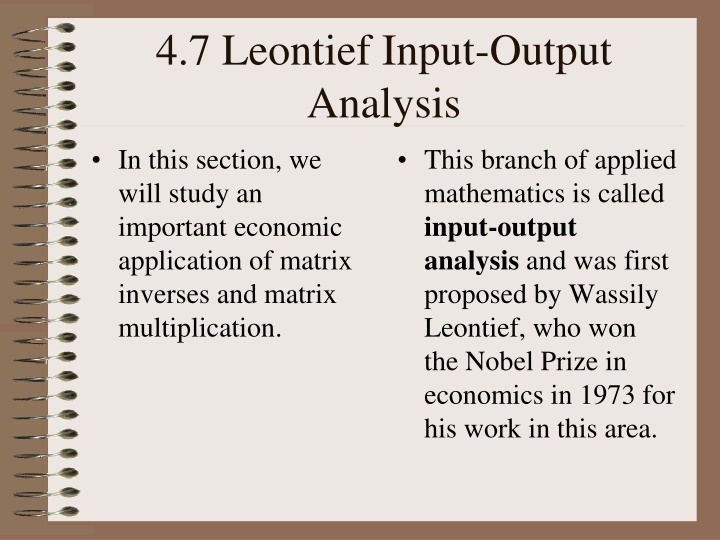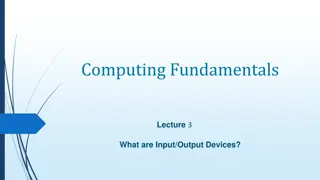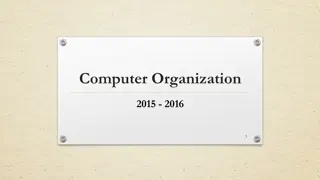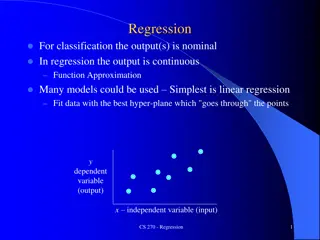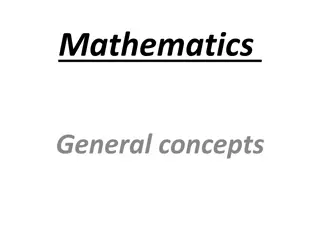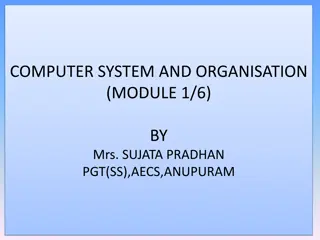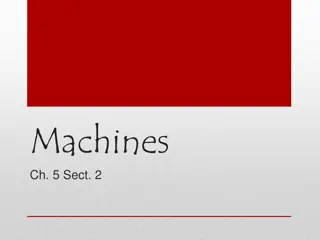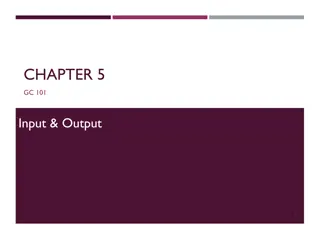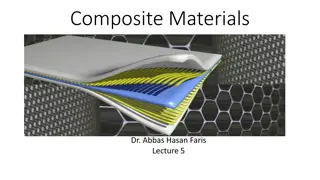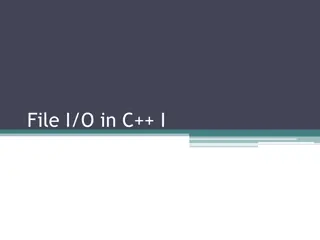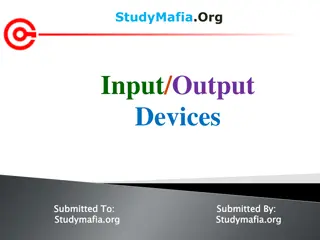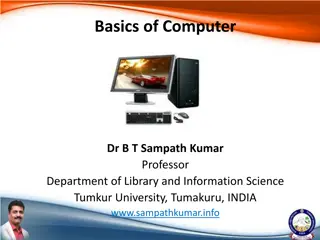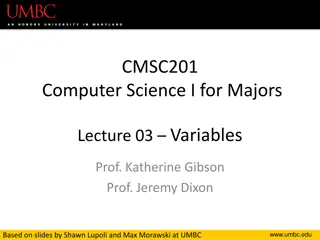Leontief Input-Output Analysis and Technology Matrix
In this section, we delve into the economic application of matrix inverses and multiplication through the input-output analysis pioneered by Wassily Leontief. Learn about the two-industry model and matrix equations that represent internal and external demand, culminating in the technology matrix.
Uploaded on Mar 13, 2025 | 0 Views
Download Presentation

Please find below an Image/Link to download the presentation.
The content on the website is provided AS IS for your information and personal use only. It may not be sold, licensed, or shared on other websites without obtaining consent from the author.If you encounter any issues during the download, it is possible that the publisher has removed the file from their server.
You are allowed to download the files provided on this website for personal or commercial use, subject to the condition that they are used lawfully. All files are the property of their respective owners.
The content on the website is provided AS IS for your information and personal use only. It may not be sold, licensed, or shared on other websites without obtaining consent from the author.
E N D
Presentation Transcript
4.7 Leontief Input-Output Analysis In this section, we will study an important economic application of matrix inverses and matrix multiplication. This branch of applied mathematics is called input-output analysis and was first proposed by Wassily Leontief, who won the Nobel Prize in economics in 1973 for his work in this area.
Wassily Leontief http://www.iioa.org/leontief/Life.html Born: 1906 Place of Birth: St. Petersburg, Russia Residence: U.S.A. Affiliation: Harvard University, Cambridge, Wassily Leontief was born August 5th, 1905 in St. Petersburg, the son of Wassily W. Leontief and his wife Eugenia. A brilliant student, he enrolled in the newly renamed University of Leningrad at only 15 years old. He got in trouble by expressing vehement opposition to the lack of intellectual and personal freedom under the country's Communist regime, which had taken power three years earlier. He was arrested several times. At Harvard, he developed his theories and methods of Input-Output analysis. This work earned him the Nobel prize in Economics in 1973 for his analysis of America's production machinery. His analytic methods, as the Nobel committee observed, became a permanent part of production planning and forecasting in scores of industrialized nations and in private corporations all over the world.
Wassily Leontief http://www.iioa.org/leontief/Life.html Wassily Leontief in 1983. Photo taken by Gregory Edwards For more information on Professor Leontief, click on the link at the top of this slide.
Two industry model We start with an economy that has only two industries : agriculture and energy to illustrate the method and then this method will generalized to three or more industries. These two industries depend upon each other . For example, each dollar s worth of agriculture produced requires 0.40 dollars of agriculture and 0.20 dollars of energy. Each dollar s worth of energy produced requires 0.20 of agriculture and 0.10 of energy. So, both industries have an internal demand for each others resources. Let us suppose there is an external demand of 12 million dollars of agriculture and 9 million dollars of energy.
Matrix equations Let x represent the total output from agriculture and y represent the total output of energy. The equations x = 0.4x+0.2y y = 0.2x + 0.1y can be used to represent the internal demand for agriculture and energy. The external demand of 12 and 9 million must also be met so the revised equations are : x = 0.4x+0.2 y + 12 y = 0.2x + 0.1y + 9 These equations can be represented by the following matrix equation: 0.4 0.2 0.2 0.1 12 9 x y x y = +
Technology matrix (M) = 0.4 0.2 0.2 0.1 Read left to right, then up A input from agriculture to produce of agriculture input from agriculture to produce of energy A $1 =M $1 input of energy to produce of agriculture input of energy to produce energy E $1 $1 of
Matrix equations We can represent these matrices symbolically as follows: X = MX+D 0.4 0.2 0.2 0.1 12 9 x y x y = + X MX = D IX MX = D (I M)X = D = 1 ( ) X I M D if the inverse of (I M) exists.
Solution We will now find ( X = 1 ) I M D 1.First, find (I M): 1 0 The inverse of (I M) is: 0 1 0.4 0.2 0.2 0.1 0.6 0.2 0.2 0.9 = 1.8 .4 .4 1.2
Solution: After finding the inverse of (I M), multiply that result by the external demand matrix D . The answer is to produce a total of 25.2 million dollars of agriculture and 15.6 million dollars of energy to meet both the internal demands of each resource and the external demand. 25.2 15.6 1.8 .4 .4 1.2 12 9 =
Advantages of method Suppose consumer demand changes from $12 million dollars of agriculture to $8 million dollars and energy consumption changes from $9 million to $5 million. Find the output for each sector that is needed to satisfy this final demand.
Solution: Recall that our general solution of the problem is ( ) X I M D = 1 The only change in the problem is the external demand matrix. (I M) did not change. Therefore, our solution is to multiply the inverse of (I M) by the new external demand matrix, D.
Solution = 1 ( ) X I M D 8 5 16.4 9.2 1.8 .4 .4 1.2 =
More than two sectors of the economy This method can also be used if there are more than two sectors of the economy. If there are three sectors, say agriculture, building and energy, the technology matrix M will be a 3 x 3 matrix. The solution to the problem will still be although, in this case, it is necessary to determine the inverse of a 3 x 3 matrix. = 1 ( ) X I M D
